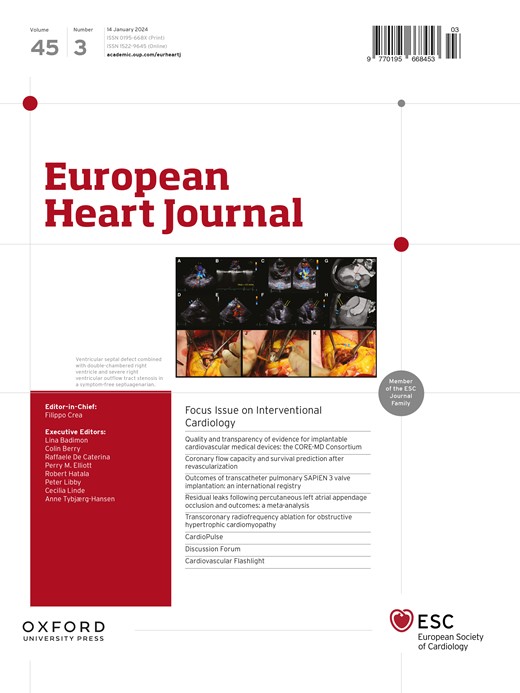LRP5, a WNT signalling pathway receptor, and platelet activation
IF 35.6
1区 医学
Q1 CARDIAC & CARDIOVASCULAR SYSTEMS
引用次数: 0
Abstract
Background and Aims Platelets are essential for haemostasis, thrombosis, and inflammation, with their functions controlled by receptor signalling pathways. This study examined the role of LRP5, a member of the Wnt signalling cascade, in platelet function and haemostasis. Methods Human platelets, as well as platelets isolated from wild-type (Wt) and Lrp5-deficient (Lrp5−/−) mice, were challenged with ADP, collagen, LRP5-specific inhibitors, and standard platelet inhibitor drugs. Results Both platelet aggregation (LTA) and flow-dependent platelet deposition on collagen-coated surfaces were significantly lower in Lrp5−/− than in Wt mice. In vivo carotid artery occlusion time measured by real-time blood flow monitoring was significantly prolonged in Lrp5−/− mice. While GPVI signalling remained intact, Lrp5−/− platelets displayed reduced α- and dense granule release after ADP stimulation, along with reduced membrane levels of purinergic receptors. VASP phosphorylation confirmed that P2Y12 downstream signalling pathway was dysfunctional in the LRP5-deficient platelets. Finally, human platelets express high levels of LRP5 and flow-mediated human platelet deposition and LTA was highly reduced by LRP5 inhibition. Under the experimental conditions tested, LRP5 deletion did not significantly affect coagulation nor induce bleeding. Conclusions These findings reveal for the first time that LRP5 plays a critical role in platelet adhesion and thrombus formation. Genetic deletion and biochemical inhibition of LRP5 markedly impair platelet aggregation and thrombosis in preclinical models, without major effects on haemostasis. Although further research is needed to evaluate its clinical applicability, LRP5 appears as a novel and actionable target to modulate platelet reactivity and thrombosis.WNT信号通路受体LRP5与血小板活化
背景和目的血小板是止血、血栓形成和炎症所必需的,其功能受受体信号通路的控制。本研究检测了LRP5 (Wnt信号级联中的一员)在血小板功能和止血中的作用。方法用ADP、胶原蛋白、Lrp5特异性抑制剂和标准血小板抑制剂刺激人血小板,以及从野生型(Wt)和Lrp5缺陷(Lrp5−/−)小鼠中分离的血小板。结果Lrp5−/−小鼠的血小板聚集(LTA)和血小板在胶原包被表面的流动依赖性沉积均显著低于Wt小鼠。通过实时血流监测,Lrp5−/−小鼠体内颈动脉闭塞时间显著延长。虽然GPVI信号保持完整,但ADP刺激后Lrp5−/−血小板显示α-和致密颗粒释放减少,同时嘌呤能受体的膜水平降低。VASP磷酸化证实P2Y12下游信号通路在lrp5缺失的血小板中功能失调。最后,人血小板表达高水平的LRP5,血流介导的人血小板沉积和LTA因LRP5抑制而高度降低。在实验条件下,LRP5缺失对凝血和出血无明显影响。结论这些发现首次揭示了LRP5在血小板粘附和血栓形成中起关键作用。在临床前模型中,LRP5基因缺失和生化抑制显著损害血小板聚集和血栓形成,对止血无明显影响。虽然还需要进一步的研究来评估其临床适用性,但LRP5似乎是一种新的、可操作的调节血小板反应性和血栓形成的靶点。
本文章由计算机程序翻译,如有差异,请以英文原文为准。
求助全文
约1分钟内获得全文
求助全文
来源期刊

European Heart Journal
医学-心血管系统
CiteScore
39.30
自引率
6.90%
发文量
3942
审稿时长
1 months
期刊介绍:
The European Heart Journal is a renowned international journal that focuses on cardiovascular medicine. It is published weekly and is the official journal of the European Society of Cardiology. This peer-reviewed journal is committed to publishing high-quality clinical and scientific material pertaining to all aspects of cardiovascular medicine. It covers a diverse range of topics including research findings, technical evaluations, and reviews. Moreover, the journal serves as a platform for the exchange of information and discussions on various aspects of cardiovascular medicine, including educational matters.
In addition to original papers on cardiovascular medicine and surgery, the European Heart Journal also presents reviews, clinical perspectives, ESC Guidelines, and editorial articles that highlight recent advancements in cardiology. Additionally, the journal actively encourages readers to share their thoughts and opinions through correspondence.
 求助内容:
求助内容: 应助结果提醒方式:
应助结果提醒方式:


